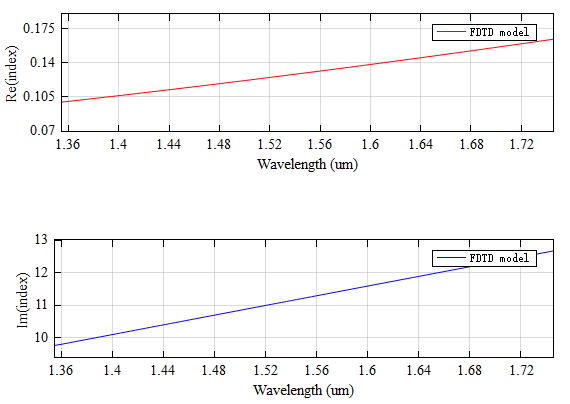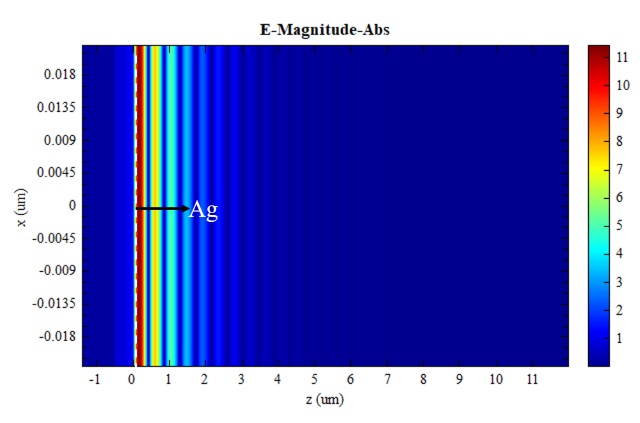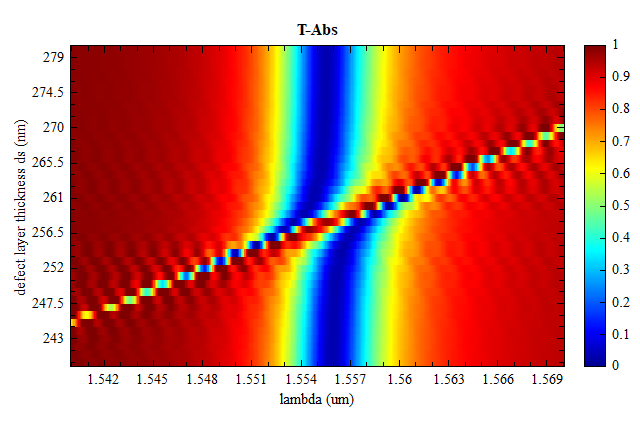Preface
In 2007, Kaliteevski et al. successfully excited Tamm plasmon polaritons (TPPs) between metal and Bragg gratings. This new optical effect is different from surface plasmon polaritons (SPPs). The TPPs can be directly excited since the dispersion curves of TPPs lie within the light cone. Additionally, both TE and TM polarized light can be stimulated in TPPs since there is no requirement for the angle of incidence, while SPPs only support TM polarized light excitation. These characteristics make TPPs popular in the fields such as surface light enhancement, nonlinear optics, and lasers. This case will simulate and study this process.
Simulation settings
As shown in the below figure, the bragg grating with defect layer is simulated in 2D FDTD. And the periodic boundary condition is used in the x direction to save the simulation time. The structure parameters of metal layer and Bragg grating referring to the paper[1] are shown in the table below.

| name | symbol | size |
|---|---|---|
Material
In this case, as a drude material is set as follows and its fitting result is shown in the figure below. The and in the Bragg grating are dielectric materials with relative refractive indices of 1.45 and 2.2 [1:1], respectively. And the refractive index of the defective layer is 1.76.
| name | symbol | size |
|---|---|---|
| Permittivity | ||
| Drude pole frequency | ||
| Inverse of the pole relaxation time |

Simulation results
When a layer of is introduced into the Bragg grating as a defect, an ultra-narrow band filter will be formed within the original forbidden band, just like the reflection spectrum shown in the following figure.

Now the strong resonance at layer can be observed from the below electric field distribution at .

As a comparison, the reflection spectrum without the defect is shown in the following figure.

The electric field distribution at clearly presents that the light is completely absorbed by the Bragg grating multilayers.

Parameter analyses
After opening project and running the parameter sweeps sweep_ds, how the width of defect layer affects the reflection spectrum can be studied. As shown in the following figure, with the increase of the defect width, the central wavelength of the generated resonance peak is red-shifted, which is consistent with fig3 in the reference[1:2].





